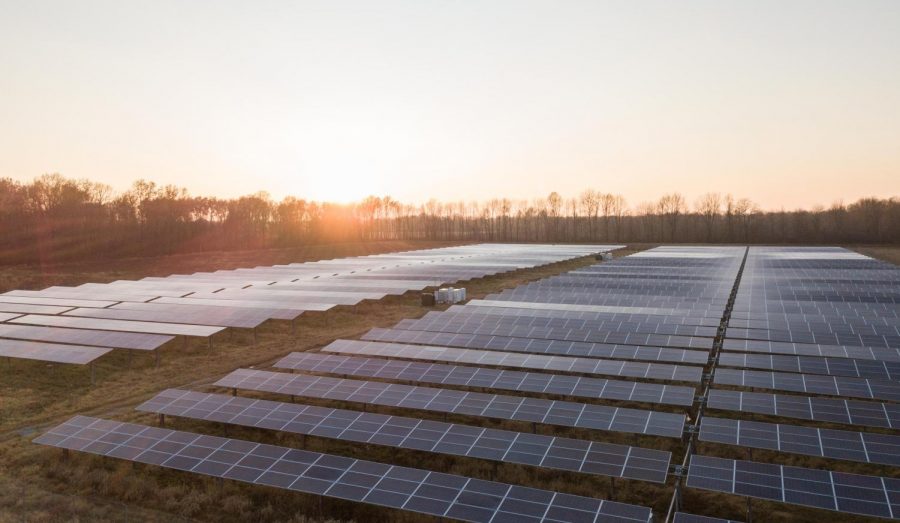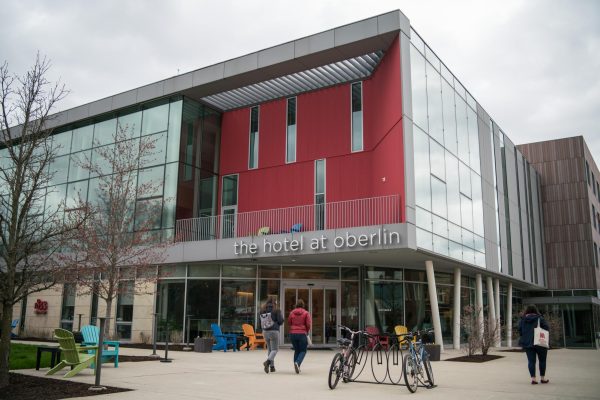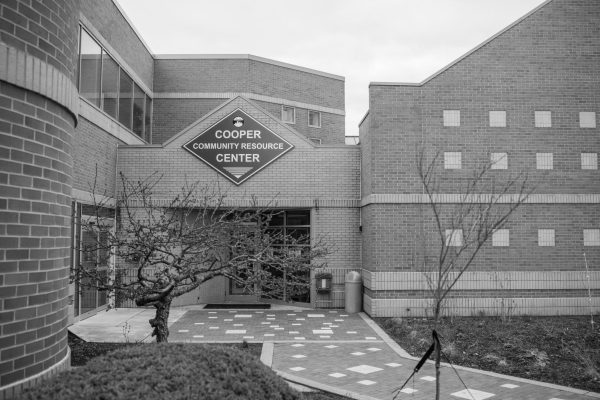Oberlin Advances to Final Round of Energy Contest
Photo by Bryan Rubin, Photo Editor
The 2.27-megawatt solar array located on the College campus generates about 12 percent of the College’s electricity and is one of the many reasons Oberlin has a chance to win the Georgetown University Energy Prize of $5 million.
Oberlin has advanced with nine other cities to the final round of competition for the Georgetown University Energy Prize, which recognizes top performing communities for increasing energy efficiency and reducing municipal and household energy budgets. The winner, to be announced this month, will earn $5 million to fund their “dream project.”
Former staff members of the Oberlin Project and members of Providing Oberlin With Efficiency Responsibly entered Oberlin into the competition in 2014. Those involved are excited and proud of Oberlin making it so far into the competition.
“I have been telling them all along that we can win this thing,” POWER Energy Advocate Greg Jones said.
POWER Board Member and City Councilmember Sharon Pearson said she was originally surprised when she heard that Oberlin was advancing, but admits that she probably shouldn’t have been.
“It’s nice to be in this group because we are one of the smallest cities,” Pearson said. “I was surprised to see some other cities not listed — cities that I know are doing great things. I think we underestimate ourselves. Just getting there proves how much of a winner we are as a community.”
Oberlin has spent the past decade working toward sustainability through the Oberlin Project, POWER, and other efforts. Former Oberlin Project Executive Director Sean Hayes said that entering Georgetown University’s contest helped Oberlin gauge its sustainability goals.
“The Georgetown [University Energy] Prize was one of the main focuses of the Oberlin Project when it came to our energy goals,” Hayes said. “Consuming less gas on the residential and the municipal level was the laser focus of the Georgetown Project. That was absolutely in line with the energy goals of the Oberlin Project and the next steps in our climate action plan.”
Pearson said that Oberlin has been dedicated to conservation long before these projects were created.
“I think some of the work was done before the Oberlin Project existed,” Pearson said. “The city changed the electricity portfolio to include more green or renewable energy. As the city was working toward that, we reduced carbon emissions. We were already doing these things. It all came together to really make it so that we were in the top 10.”
POWER has offered one-on-one service to residents with energy use and has helped educate people on ways they can make their homes more energy efficient.
“Oberlin’s sustainability approach matched up with what Georgetown was looking for,” Jones said. “We have grown in many different areas. With the climate action plan in mind, everything was structured so we could be competitive before we even knew about a competition.”
Oberlin Electric Department Director Doug McMillan said that the city has continued to overshoot its goals to ensure it would stand out from the 49 other communities in the contest.
“Not many cities have an organization like POWER to help [someone’s] home get weatherized and become more sustainable,” McMillan said. “That makes Oberlin different [from] most cities.”
Jones said his position as energy advocate is unique, and the existence of such a position helped separate Oberlin from the rest of the competition.
“As energy advocate for POWER, my job is to bring energy efficient measures to every household, church, and building here in Oberlin,” he said. “We try to educate the public on what we have available to make their homes more comfortable, sustainable, and efficient.”
Pearson also credits Oberlin’s climate action plan to the city’s success, which is something most cities don’t have. Jones says that Oberlin has all the right qualities.
“We are flexible enough to adjust to the needs of our community,” Jones said. “Because we are innovative, we are able to tie in forces like the community, the solar co-op, and the energy coalition. The fact that we are tying in our energy efficient measures with our renewable measures and that we look far ahead at how they are interconnected is Oberlin’s strongest suit. We are constantly looking at how we can innovate our approach to sustainability.”
If Oberlin wins the $5 million prize, those involved in the contest hope to use the funding to further expand Oberlin’s energy efficient programs.
“I want to make every home energy-sufficient so that people are saving more than $200 a year — that they receive savings on an ongoing basis instead of a temporary basis,” Pearson said. “There is a lot we can do with the money.”
McMillan said he wants to use some of the money to provide insulation for homes.
“We have been doing that through POWER since 2008,” he said. “A lot of homes have been insulated, but there are plenty more that can benefit from it. I also put a grant to replace refrigerators for low-income people. It could result in electric savings for the city.”
Jones added that he wants to increase College students’ engagement in the city’s efforts with the money.
“I would like for us to look at some of the projects that the Environmental Studies program has been putting out for students to have ideas,” Jones said. “I would look at some of the ideas that have been gathered through the years. I would want to see if any of those projects or a combination of those projects could be put forward.”
According to GEUP, 50 cities and counties all over the nation have collectively saved 11.5 trillion BTUs of energy, reduced their carbon emissions by an estimated 2.76 million metric tons, and saved nearly $100 million from municipal and household energy budgets since 2014.
The other counties and cities that have advanced to the final round include Bellevue, WA; Bellingham, WA; Berkeley, CA; Chula Vista, CA; Fargo, ND; Fort Collins, CO; Montpelier, VT; Takoma Park, MD; and Walla Walla, WA.






